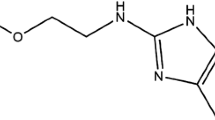Abstract
The effect of in-place regeneration of protein A adsorbents on protein adsorption characteristics is investigated. Regeneration with sodium hydroxide and time of exposure determined the protein capacity of the adsorbent, but no effect was observed on the adsorbent protein affinity. Fixed-bed adsorption of human immunoglobulin G was studied. Breakthrough curves were measured for protein adsorption on fixed-bed columns. These data were analyzed by a simple kinetic model to determine the rate constants for the adsorption process. It was found that forward adsorption rate constant remained constant along the chemical treatment exposure time. Protein A adsorbent selectivity was determined using mouse serum immunoglobulins G 1 and G 3 . Column linear gradient elution showed that adsorbent selectivity decreased with the exposure time chemical treatment. The implications of these results on the design and optimization of protein A chromatographic process are discussed.
Similar content being viewed by others
Author information
Authors and Affiliations
Additional information
Received: 9 September 1996
Rights and permissions
About this article
Cite this article
Tejeda-Mansir, A., Espinoza, R., Montesinos, R. et al. Modelling regeneration effects on protein A affinity chromatography. Bioprocess Engineering 17, 39–44 (1997). https://doi.org/10.1007/s004490050350
Issue Date:
DOI: https://doi.org/10.1007/s004490050350




